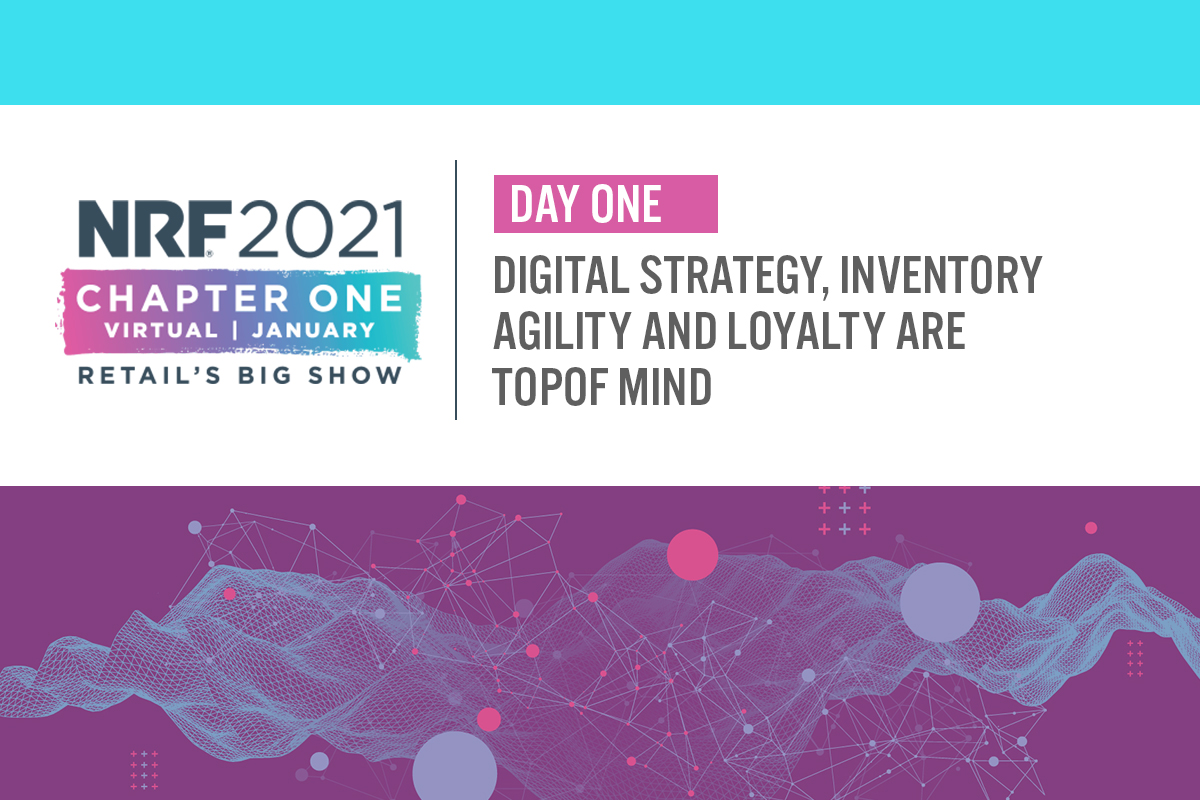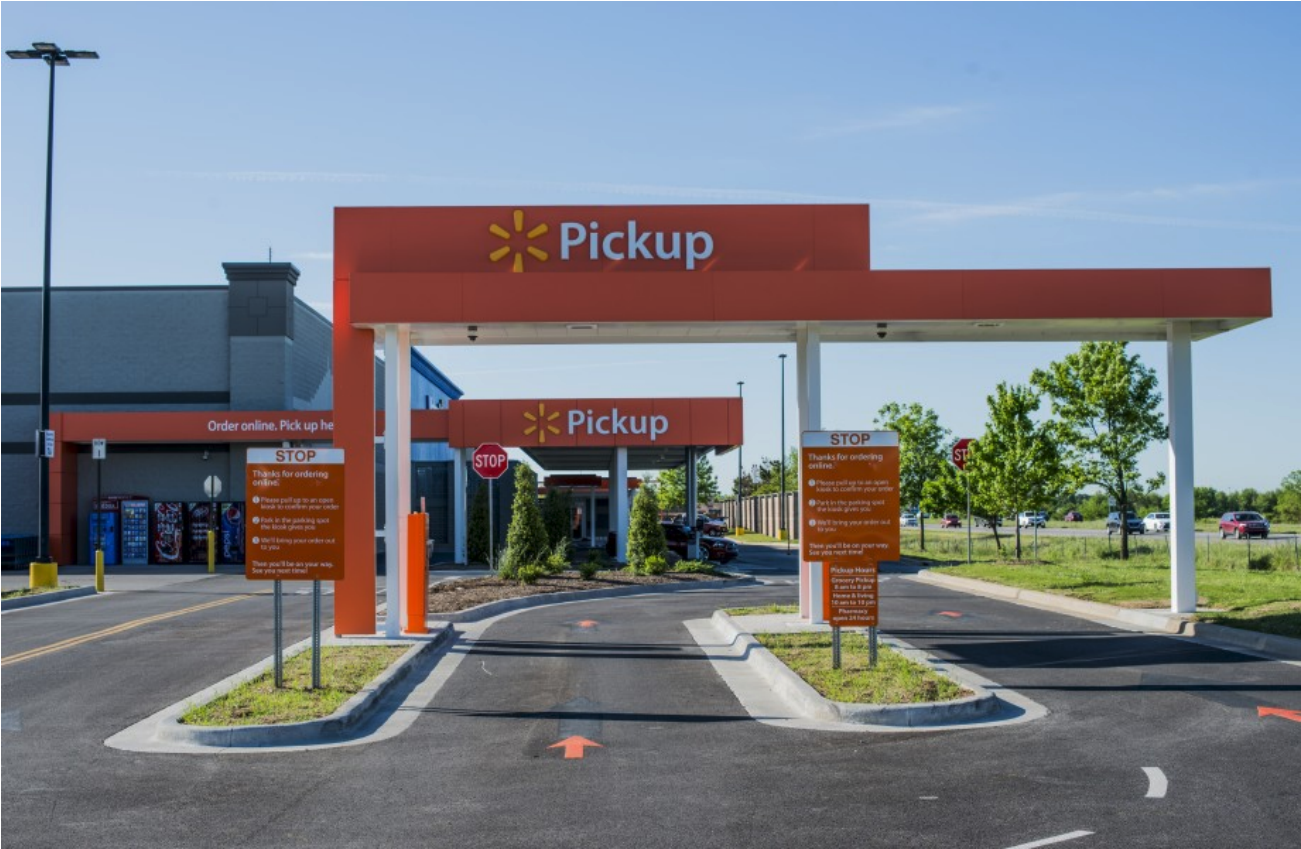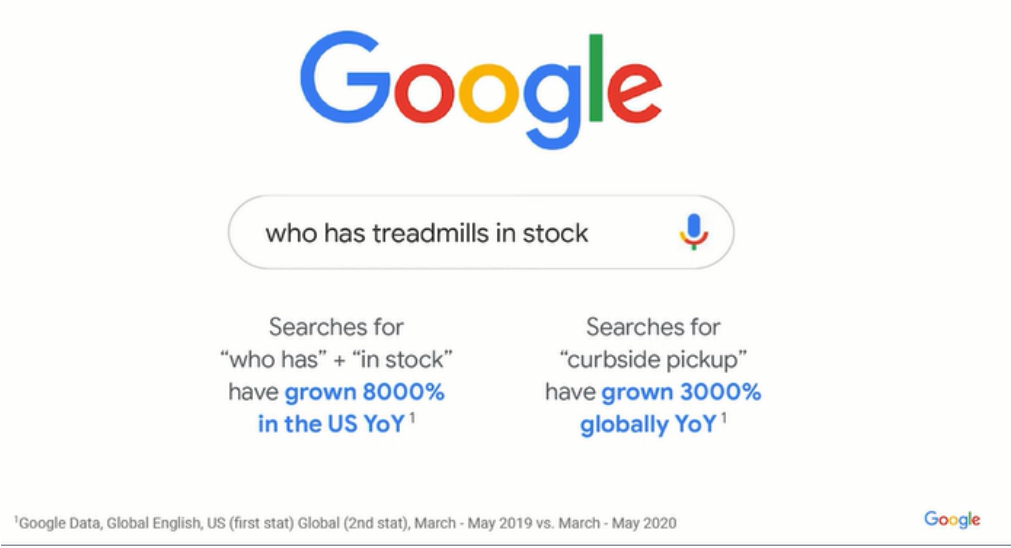
Nitheesh NH
NRF 2021, the annual “Retail’s Big Show” event hosted by the National Retail Federation (NRF), has moved online for the first time, taking place entirely virtually over six days, from January 12 to 22.
The Coresight Research team is presenting takeaways from each day of the event in separate reports. In this report, we offer 10 key insights from day one.
 A Walmart curbside-pickup location
A Walmart curbside-pickup location
Source: Walmart[/caption] 3. Streamlined Inventory Management Systems Are Key to Omnichannel Success In a panel on the future of digital retail, Salesforce leaders highlighted the importance of a strong, flexible inventory management system in the new world of retail. As consumers continue to engage with retailers across a wider variety of channels, having real-time knowledge of where all inventory sits has become vital for most brands and retailers. Amit Chetal, Americas Retail Lead at technology company Cisco, highlighted flexible inventory management as a key component of the modern retail strategy. Even more important than being able to view inventory across channels is the ability to easily and quickly move inventory across channels to meet the consumer where they are, Chetal said. In a separate panel, Samsung leaders also outlined the importance of investing in a strong, agile content management across online and offline channels. 4. Supply Chain Will Be One of the Top Three Retail Areas of Change, According to Google In the session entitled “How Google is Helping Retailers Transform the Shopping Journey,” Carrie Tharp, VP of Retail and Consumer at Google Cloud, and Vicki Cantrell, CEO and Founder of Vendors in Partnership, discussed consumer and retail trends. Tharp reported three future areas of change for retailers: Source: NRF[/caption]
Source: NRF[/caption]
NRF 2021 Day One: 10 Key Insights
The first day of NRF 2021 highlighted new digital strategies, the importance of an agile supply chain and the growing value of loyalty programs. The event saw industry leaders discuss the unprecedented speed with which retailers pivoted in 2020 and outline how the industry can continue to adapt to a changing global landscape and evolving consumer behavior. 1. Retailers Must Adapt to Pandemic-Driven Changes in Consumer Spending Across the day’s sessions, retail leaders emphasized that changes in consumer spending patterns and engagement driven by the global health crisis will not disappear once the Covid-19 pandemic is over. In a conversation with Deloitte Chief Economist Ira Kalish, Walmart Chief Customer Officer Janey Whiteside indicated that Walmart is planning for a long-term shift in its customers’ spending haits. Whiteside expects some pandemic-induced job losses to be permanent, and reported that in a November survey, about 50% of Walmart customers reported that they were worried about the economy, and 40% did not expect a speedy economic recovery. To adapt, Walmart has honed in on its core message of everyday low prices to help consumers balance their budgets now and through the foreseeable future. 2. Surging Digital Channels Will Retain Importance Post Crisis Whiteside and other speakers throughout the day indicated that they expect consumers to continue to utilize the digital shopping channels that they have shifted to during the crisis. Walmart reported that since the Covid-19 outbreak, more than four times as many customers have utilized the company’s delivery and pickup options. Walmart has adapted its stores to cater to consumers who may use this model for the foreseeable future: The company has added 40% more pickup time slots and has begun to use its stores as fulfillment centers to facilitate widespread fast home-delivery options. [caption id="attachment_121705" align="aligncenter" width="700"] A Walmart curbside-pickup location
A Walmart curbside-pickup locationSource: Walmart[/caption] 3. Streamlined Inventory Management Systems Are Key to Omnichannel Success In a panel on the future of digital retail, Salesforce leaders highlighted the importance of a strong, flexible inventory management system in the new world of retail. As consumers continue to engage with retailers across a wider variety of channels, having real-time knowledge of where all inventory sits has become vital for most brands and retailers. Amit Chetal, Americas Retail Lead at technology company Cisco, highlighted flexible inventory management as a key component of the modern retail strategy. Even more important than being able to view inventory across channels is the ability to easily and quickly move inventory across channels to meet the consumer where they are, Chetal said. In a separate panel, Samsung leaders also outlined the importance of investing in a strong, agile content management across online and offline channels. 4. Supply Chain Will Be One of the Top Three Retail Areas of Change, According to Google In the session entitled “How Google is Helping Retailers Transform the Shopping Journey,” Carrie Tharp, VP of Retail and Consumer at Google Cloud, and Vicki Cantrell, CEO and Founder of Vendors in Partnership, discussed consumer and retail trends. Tharp reported three future areas of change for retailers:
- The role of the store—As retailers are setting up capabilities for curbside pickup and adding features to make the store more convenient, they are rethinking store designs. For example, Tharp said that Starbucks is considering a new, “walk-through” store design.
- The rapid acceleration of digital capabilities—Having the infrastructure in place to quickly implement and enhance digital capabilities is important. Consumer expectations are continually rising around product search, availability and transparency. For example, Tharp said that Google searches for “who has + in stock” have soared 8,000% in the US year over year, and searches for “curbside pickup” grew 3,000% year over year globally—both for the period March to May 2020, amid the pandemic.
 Source: NRF[/caption]
Source: NRF[/caption]
- Focus on supply chain—The Covid-19 pandemic has underscored the importance of a nimble supply chain. Tharp highlighted that the supply chain was one of the biggest issues for retailers during the 2020 holiday season, and she expects it to be an area of focus in 2021.
- Identification of customer segments—Retailers need a 360-degree view of their customers.
- Loyalty strategy—Retailers must identify what behaviors they want to affect and how they will measure success.
- Flexibility—Retailers must ensure their loyalty programs are agile.